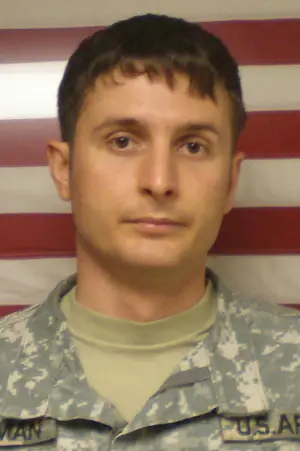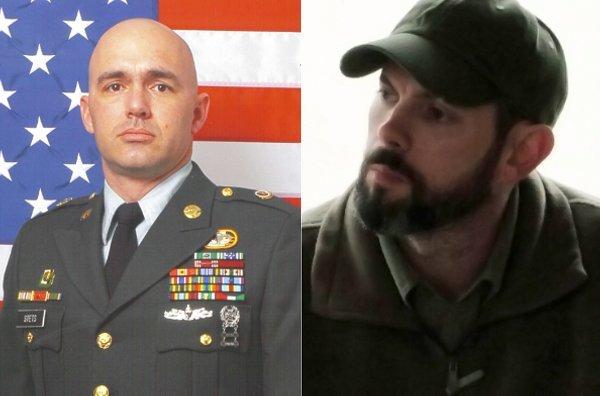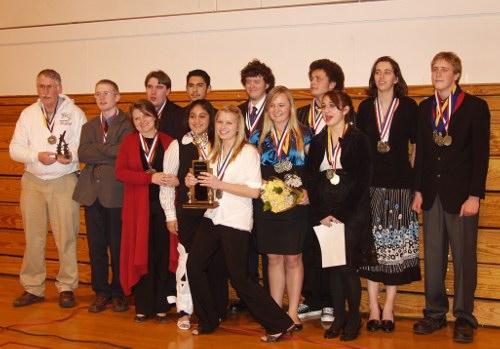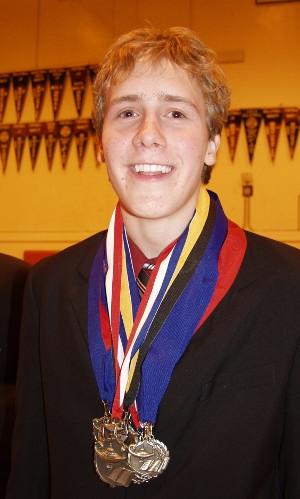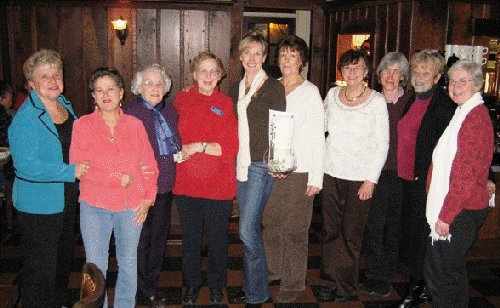LAKEPORT – A young woman who dated both an alleged murder suspect and the man he is charged with killing was the main witness on the fourth day of testimony in the murder trial of two Clearlake men on Thursday.
Patricia Campbell, 23, began the day on the stand and continued giving testimony well into the afternoon in the murder trial of her former boyfriend, Shannon Lee Edmonds, 35, and his friend and hers, Melvin Dale Norton, 38.
Norton's former girlfriend, Jackie Shelafoe, also would take the stand on the trial's fourth day.
Campbell had dated both Edmonds and the man he and Norton are accused of killing last Sept. 22 – Shelby Uehling, a 25-year-old Montanan who had moved to the county several months earlier.
Defense attorneys Stephen Carter, representing Norton, and Doug Rhoades, defending Edmonds, have argued that their clients acted out of self-defense and concern that Uehling was not leaving Campbell alone after she broke up with him.
Uehling's battered body was found on the shoulder of Old Highway 53, with his throat slashed and his body showing the marks of having been beaten with weapons which the prosecution alleges included a fold out billy club – also called an asp – and the shaft end of a broken golf club.
Testimony started about an hour late on Thursday as the court was waiting for a juror to arrive.
Once the jury was assembled, prosecutor Art Grothe called Campbell to the stand.
The young woman, who swiveled her seat back and forth and crossed her arms in front of her, recalled under questioning how she met both Edmonds and Uehling last year.
She met Edmonds last spring and moved in with him in his motor home at Lakeside Resort in Clearlake last June 11. He lived next door to her mother.
About two months later, sometime in mid-August, Campbell met Uehling at the home of a friend of her mother's. At that time, she was still with Edmonds.
However, she recounted during direct and cross-examination that she and Edmonds had an on-again, off-again relationship, in which she would sometimes leave for short periods of time.
A short time after meeting Uehling, Campbell took one of those breaks and moved out of Edmonds' motor home and into her mother's trailer next door.
She contacted Uehling about cutting the hair of a friend of his and a brief relationship began, with the two constantly using methamphetamine which she said Uehling supplied.
After about a week she broke off the relationship and moved back in with Edmonds, with whom she denied speaking about dating Uehling.
She estimated she was back with Edmonds about two to three days before Uehling's death.
Not long after she and Uehling broke up, Campbell – who slept for several days after coming down off of the methamphetamine – was at her mother's home with Edmonds and Norton when Uehling showed up and knocked on the door.
When no one answered, Uehling went around knocking on all of the windows. That was the only time Campbell said she was scared of Uehling, which she said she shared with Edmonds and Norton, the latter being a longtime family friend. Edmonds and Norton went out and told Uehling to leave, which he did.
However, Campbell said Uehling never threatened her.
Grothe showed her an envelope with writing on it describing Uehling's red 1988 Honda and the license plate number. Campbell said she didn't write on the envelope and didn't recognize the writing on it.
On Sept. 21, Campbell was asleep at Edmonds' motor home when he and some friends, including Norton and Pat Hand, who testified on Tuesday, were there for a barbecue. Later, they watched movies. She woke up, Edmonds brought her something to eat, and after she ate she went back to sleep.
The next time she woke up, she said, was “when the cops were there” early on the morning of Sept. 22, within hours of Uehling's death.
Grothe showed her pictures of the billy club, which she recognized as belonging to Edmonds, but she didn't remember where Edmonds kept it. She also identified a knife she had seen Edmonds carry on a regular basis.
Campbell said she couldn't be sure that a black pair of jeans shown in a photo belonged to Edmonds, although she had seen him wear black jeans. She positively identified as Edmonds' a pair of black, steel-toed boots in a photograph Grothe showed her.
Both the prosecution and defense would ask Campbell about a series of text messages she and Uehling exchanged after their breakup, including a photo of her and her 4-year-old daughter that she sent to him. Many of his messages asked her about the reasons for their breakup, and she said her brother told her that Uehling had gone to her father and said he would get off drugs and get her a house if she would get back together with him.
Campbell said she didn't remember getting many of the texts – the screen of her cell phone had broken after she threw it while coming off of methamphetamine – or writing some of them, including one in which she told him to lose her phone number and stay away from her family.
When Rhoades questioned Campbell about her relationship with Uehling, she said she broke it off after about a week not for any particular incident but because she was just “pretty much tired” after doing methamphetamine every day.
Rhoades also questioned her about her statements to Clearlake Police Det. Tom Clements about Uehling being heavily into drugs, having lost his family – his mother and brother had died the previous year – and that Uehling was “stalking” her. Campbell didn't remember the statements until Rhoades showed her transcripts of the interview with Clements.
Following the morning break, out of the jury's presence Grothe informed the court that a district attorney's investigator seated in the audience told him that Campbell said Edmonds was mouthing words at her while she was testifying.
Rhoades said Edmonds was a “prolific note taker” and he hadn't seen him doing it. Neither did Judge Arthur Mann, who said he was focusing more on Campbell, but he said he would be watching for it.
Mann also disclosed that, when Campbell mentioned her brother's name, it brought to mind that he is slightly acquainted with the young woman, and had been recruited by a friend to take part in a bowling league about 10 years ago. In that league Mann and his friend were teamed with Campbell's parents. He said his son had bowled with her brother in a youth league.
None of the attorneys had any issues and testimony continued.
Carter led Campbell through the list of texts she and Uehling exchanged in the early morning hours of Sept. 21, the day before he died.
She recalled being disoriented and confused, as well as mentally and physically exhausted in the days after her breakup with Uehling. When Carter asked her if she didn't write the texts or just couldn't remember, she said the latter.
The texts they exchanged included Uehling questioning her about their relationship, and trying to get answers about her decision to leave. He said he didn't understand her thinking or intentions, and asked, “Do you like me wondering all the time?” Another message asked, “Do you like keeping me on the edge of doubt?”
During that exchange she confronted him about going to speak with her father. Later, she sent him the photo of her and her daughter.
“Oh, man, wow, now you two are gorgeous,” he wrote, quickly following up with “Stunning, even,” in another message. A third message suggested, “Now that's what I call a MILF,” that being a term about a mother with whom someone would like to have sex.
At that point in the texts, Campbell replied, “F*** off, lose my number and stay away from my family,” although she said she didn't remember writing it. That was the last message she sent him.
However, Carter pointed out that phone calls from Uehling to Campbell's phone were logged at 2:24 p.m. and 10:09 p.m. Sept. 21, although Campbell said she didn't remember them. She said after she broke up with Uehling, she didn't speak with him again on the phone, but only exchanged text messages.
Carter questioned Campbell about her romantic relationship with Uehling, which became physical about three days into their week-long relationship. She said she didn't feel pressured to have sex with Uehling, and that it wasn't in exchange for drugs.
However, she told Carter that she wasn't in love with Uehling, and ultimately she returned to Edmonds because she loved him.
She also said she didn't consider Uehling's attempts to contact her stalking, but noted that he wouldn't leave her alone and that she was no longer interested in any relationship with him. Carter brought up her testimony in the Oct. 6 preliminary hearing in which Campbell said she had told both Edmonds and his teenage daughter that she was having problems with Uehling.
Norton's former girlfriend recalls events after murder
Shelafoe, who like Campbell had testified during the Oct. 6 preliminary hearing in the case, took the stand late Thursday afternoon.
She and Norton lived together in a trailer at the Lotowana trailer park on Clement. On Sept. 21, she went over to Edmonds' motor home, where Norton was already there with other friends for a barbecue. She returned home at around 9:45 p.m. and went to bed.
Shelafoe said Norton came home some time later, waking her and her dog. She went into the living room where Norton was on his cell phone saying, “He's up at the top of the hill – no, not yours, mine.” Grothe asked her if the road out of the resort and the road out of the park where Edmonds lived both ran up to a hill, and she said yes.
Norton, who was wearing shorts, then changed clothes and “grabbed my mom's golf club and ran out the door,” she said. Shelafoe said she had kept the golf club at the front door.
Grothe brought out two pieces of evidence, separately packaged in plastic – the broken shaft end of a golf club and the head of a club. Shelafoe identified them as being parts of her mother's golf club.
She said Norton returned about 15 to 20 minutes after running out, accompanied by Edmonds. “There was blood on Melvin's pants,” said Shelafoe, and Edmonds had a cut on his arm that she hadn't previously noticed. Edmonds' pants were dark and so she didn't notice blood on him.
Norton allegedly told her, “Don't worry, we didn't stab nobody.”
The two men changed in another room and came out in fresh clothes, with Edmonds wearing clothes he borrowed from Norton.
“What did they do with the clothing they were wearing?” asked Grothe.
“They hid it in my front bedroom,” she said, explaining that the clothes were placed in a Safeway bag that was put in between cushions on the bed. She later found the bag and turned it and other materials over to police.
Shelafoe said she didn't see the weapons, but she had seen Edmonds playing with the asp, and carrying the double-bladed knife and a smaller knife in a sheath on previous occasions.
After they changed clothes, Edmonds and Norton left the house and Norton returned about 10 to 20 minutes later. Shelafoe said she went back to bed after they left.
Rhoades asked Shelafoe if she remembered being at Edmonds' motor home several days before the murder when Uehling showed up at Campbell's mother's next door. She didn't. He then read to her from a transcript of an interview she had with Clements. Reference to a “stalker” reminded her of the occasion, but she said she didn't remember the day it happened.
Carter asked Shelafoe about what she did after Norton and Edmonds left. She said she went back to bed. “There was nothing I could do,” said Shelafoe.
He asked if she called police, and Shelafoe said she didn't have a phone. Carter pointed out there was a cell phone there.
Grothe asked to approach the bench, and afterward Mann asked the jury to leave the room. Grothe said he wanted to ask Shelafoe some additional questions and Carter asked that Shelafoe leave the courtroom during the arguments.
“I just don't want the witness to become tainted by argument,” he said, and Mann had her leave for a few minutes.
Referring to Carter's questions about Shelafoe not calling police, Grothe said that the implication was “that she either wasn't concerned about it or she was not doing her job.”
He related to parts of her interview with Clements where she referenced previous domestic violence issues and told investigators that she was afraid to ask Norton any questions.
In light of Carter's questions, Grothe wanted to ask Shelafoe about why she didn't make the call.
“I think it's highly inappropriate to ask her that question,” Carter replied.
He objected to Grothe's proposed line of questioning because he argued that it was prejudicial to go into uncharged and previously unalleged misconduct that has never been proven.
Carter said Grothe wasn't including all of the information in that transcript. He said there is an indication that Shelafoe has had anger, alcohol abuse and domestic violence issues, and there was no evidence Norton was involved.
Rhoades said Carter “pretty well covered” his concerns, adding that he felt the information also was prejudicial to Grothe's case.
Carter added that it's a mistake to open up to a mini trial about Shelafoe's statements to police, which could end up scrutinizing her.
“Counsel thought it was appropriate enough to ask the question why she didn't call the cops,” said Grothe. “He's the one who brought it up.”
If there was going to be an attempt to blame Shelafoe for not taking action, Grothe wanted to ask her why she didn't.
Mann ordered Shelafoe to come back in and answer the question out of the presence of the jury.
With Shelafoe back on the stand, Grothe asked her why she hadn't called police. “I was scared to,” she said, explaining she feared Norton.
“Were you scared of what he would do?” asked Grothe.
Carter objected, saying that Grothe was leading Shelafoe's answer. Mann overruled, and Shelafoe answered in the affirmative, telling the court she was afraid of Norton hurting her.
“That's as far as I'm going to go,” said Grothe.
Mann said he would permit the testimony in front of the jury, and had the jury brought back in.
Grothe repeated his questions of Shelafoe, who gave the same answers. Rhoades had no further questions of her, but Carter asked her if she had gone to bed after Edmonds left and she said yes.
Testimony will resume next Tuesday and Wednesday, but the trial will not be in session on Thursday, Mann said.
E-mail Elizabeth Larson at This email address is being protected from spambots. You need JavaScript enabled to view it. . Follow Lake County News on Twitter at http://twitter.com/LakeCoNews and on Facebook at http://www.facebook.com/pages/Lake-County-News/143156775604?ref=mf .

 How to resolve AdBlock issue?
How to resolve AdBlock issue? 